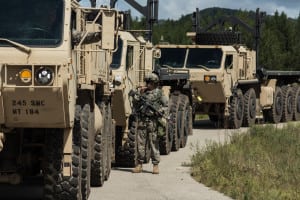
A House Armed Services Committee (HASC) panel is seeking more information on the Army’s Common Tactical Truck (CTT) program, citing concerns the service only included $16.3 million in its budget request to further development of the new heavy tactical truck effort. “This amount suggests the Army is willing to trade off the opportunity presented by commercial industry's interest to develop and field a 21st century heavy truck fleet to support Army and other defense logistics requirements now and into the…

 By
By 











